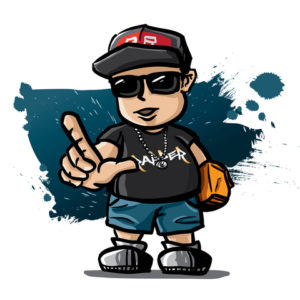You know you’re a speech language pathologist when your son turns up a rap song and you think, “that guy has an unreal diadochokinetic rate.” True story.
Then this summer, I saw a study on the vocabulary of music artists (across genres) which analyzed the number of unique words used in their songs. Eminem topped the list. Jay Z, Tupac Shakur and Kanye West followed. (You can read the article here.)
Now I had been told that Eminem used to read the dictionary which would certainly account for a larger vocabulary, but then I went online to track down the accuracy of that fact and I’ve got to say, I was impressed.
Because Eminem loves words the way we love words.
In an interview with Anderson Cooper on 60 Minutes he said, when asked about reading the dictionary, “I just felt like I wanted to be able to have these words at my disposal in my vocabulary at all time whenever I need to pull them out. Somewhere they’ll be stored like locked away.”
And he keeps boxes and boxes of scrap paper covered with words, phrases, ideas, and turns of phrase. And he discusses “bending the words.” Changing the enunciation just enough that he can create rhymes where, on the surface, none exist.
Now obviously the content and profanity of his lyrics aren’t going to make his music welcome in the therapy room, but we can certainly capitalize on the fact that these artists, often revered by our students, have a real appreciation for the spoken word and facility with language. (Eminem mentions in the interview that despite changing schools frequently and finally leaving after ninth grade, he always did well in English.)
So how can we constructively use this to our advantage? I have a couple of ideas.
- Create a vocabulary box. You could do this for an individual, group or classroom, but either start jotting down new words or favorite words/phrases. These can later be used for writing prompts or projects.
- Encourage bragging. I have students in desperate need of improved self-esteem and rap encourages boasting. Most listeners will focus on the put downs in a “diss track,” but there’s a lot of braggadocio in there too. Have your students create a rhyme, over the top, talking about their talents and accomplishments.
- Work on fluency and speed. Rap is known for its rapid fire pace so have students create short rhymes and focus on increasing their accuracy of productions.
I’m not a huge fan of putting kids on the spot with a “rap for me” type of task. The good news is there are apps to do it for you. AutoRap by Smule allows you to speak the words/rhyme in a normal speaking voice and then translates it into a rap version. Hysterical. (Click here for more info. There is a free version.)
Would you ever use rap in your therapy room? Any other good ideas for incorporating it that you can share?







This Post Has One Comment
ANOTHER GREAT ARTICLE! 🙂
Comments are closed.